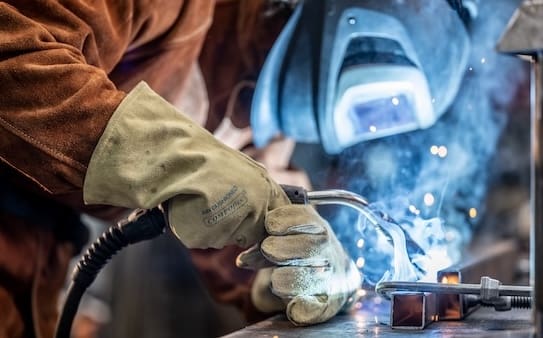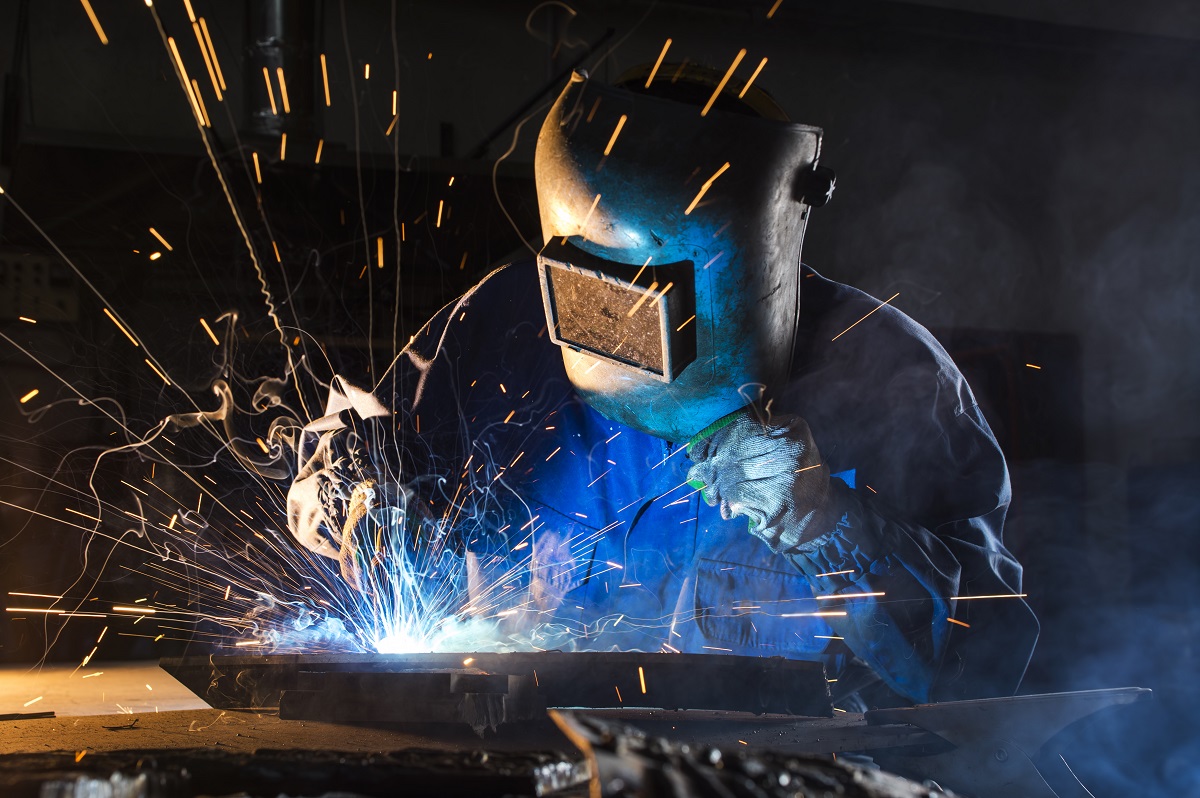Everything about Welding: Trick Insights Into Techniques and Best Practices for Success
Welding encompasses a selection of strategies, each fit for particular materials and applications. Comprehending these approaches, such as GMAW, SMAW, and TIG, is necessary for achieving optimal outcomes. Additionally, the ideal tools and security practices can not be overlooked. As prep work and troubleshooting play crucial roles in the welding procedure, grasping these aspects can greatly improve the quality of the end product. What are the vital variables that assure an effective weld?
Comprehending Different Welding Strategies
Welding strategies encompass a variety of methods, each suited to specific applications and materials. Amongst the most usual methods are Gas Steel Arc Welding (GMAW), Secured Metal Arc Welding (SMAW), and Tungsten Inert Gas Welding (TIG) GMAW, likewise called MIG welding, is prominent for its rate and versatility, making it ideal for slim materials. SMAW, or stick welding, is favored for its simplicity and effectiveness in outside settings, particularly with thicker metals. TIG welding offers precision and control, making it suitable for elaborate job and non-ferrous metals (Montana Mobile Welding and Repair Belgrade Fabrication). Each method has its special benefits and factors to consider, permitting welders to select the very best method based on the job's requirements, product type, and wanted end results. Understanding these techniques is necessary for effective welding
Necessary Welding Devices and Devices
While various welding techniques require specific skills, the right tools and tools are similarly essential for accomplishing quality outcomes. Vital welding equipment consists of welding machines, which differ depending upon the strategy-- such as MIG, TIG, or stick welding. Protective gear, consisting of gloves, helmets, and aprons, assurances safety and security and convenience during the procedure. On top of that, components and clamps assist protect products in position, making certain precision in welds. Consumables like welding rods, cable, and securing gas are likewise critical parts that influence the high quality of the weld. Devices such as cutters and mills promote surface preparation and post-weld completing, contributing to an expert outcome. Investing in high-grade tools ultimately enhances the performance and efficiency of welding tasks.
Security Practices in Welding
Appropriate security practices are vital in the welding market to secure employees from potential dangers. Welders have to use suitable personal protective devices (PPE), including helmets with correct shading, handwear covers, and flame-resistant apparel. Ample ventilation is crucial to reduce exposure to dangerous fumes and gases produced throughout the welding process. Additionally, workers ought to be learnt the proper handling of welding equipment to protect against crashes. Fire safety steps, such as maintaining combustible materials far from the welding area and having fire extinguishers conveniently available, are essential. Regular inspections of devices and workspaces can aid determine prospective dangers before they bring about crashes. By adhering to these safety practices, welders can develop a much safer working environment and decrease threats connected with their trade.
Preparing Products for Welding
Preparing products for welding is a crucial step that substantially influences the quality and integrity of the end product (Montana Mobile Welding and Repair Welding). Correct prep work involves cleansing the surface areas to eliminate impurities such as oil, rust, and dust, which can compromise the weld. Techniques such as grinding, fining sand, or using solvents are typically used to accomplish a clean surface area. Additionally, making certain that the products fit together comfortably is vital; spaces can lead to weak welds. It's also vital to consider the placement and positioning of the elements, as this will certainly impact the simplicity of welding and the last outcome. Selecting the proper filler product and guaranteeing compatibility with the base steels is necessary for achieving solid, resilient welds.
Tips for Getting High-Quality Welds
Attaining high-grade welds calls for focus to information and adherence to best methods throughout the welding procedure. Appropriate joint prep work is essential, guaranteeing surfaces are totally free and clean from pollutants. Selecting the suitable filler product and welding strategy based on the base metals is crucial for perfect bonding. Preserving consistent traveling speed and angle while welding can stop flaws and advertise harmony. Furthermore, controlling warmth input is crucial; excessive warmth can lead to warping and weakened joints. If necessary, routinely inspecting the welds throughout the process enables for immediate adjustments. Utilizing proper post-weld treatments, such as cleaning and anxiety alleviation, can boost the durability and stability of the weld, eventually making sure a successful end result.
Repairing Common Welding Issues
Welding frequently presents difficulties that can affect the high quality and honesty of the end product. view publisher site Usual concerns such as porosity, inconsistent weld beads, and getting too hot can occur, each requiring particular fixing strategies. Understanding these problems is essential for welders to improve their skills and accomplish ideal outcomes.
Porosity Issues Described
Porosity can commonly be overlooked, it remains an important concern in welding that can jeopardize the stability of an ended up product. Porosity describes the visibility of little gas pockets within the weld grain, which can lead and compromise the joint to premature failing. This trouble generally develops from contaminants, wetness, or incorrect securing gas protection during the welding process. To minimize porosity, welders should validate that the base materials are clean and completely dry, utilize ideal protecting gases, and preserve constant welding parameters. Routinely checking the devices and atmosphere can additionally assist determine possible problems before they manifest in the weld. Addressing porosity efficiently is vital for attaining strong, sturdy welds that fulfill high quality requirements.

Inconsistent Weld Beads
Irregular weld grains can substantially impact the quality and toughness of a finished item. Numerous aspects add to this issue, including inappropriate travel speed, wrong amperage settings, and irregular electrode angles. When the welder moves too promptly, a grain may show up narrow and lack penetration, while moving as well slowly can trigger too much build-up. Furthermore, using the incorrect amperage can result in either damaging or excessive spatter, both of which concession weld stability. The welder's strategy, such as irregular torch motion, can likewise lead to irregular bead appearance. To reduce these problems, welders ought to focus on maintaining stable, controlled movements and making certain correct tools setups to achieve uniformity in their welds. Consistency is vital to accomplishing strong and dependable welds.
Getting Too Hot and Warping Issues
Extreme heat throughout the welding process can lead to significant getting too hot and deforming concerns, influencing the structural honesty of the workpiece. These problems usually materialize as distortion, which can compromise alignment and fit-up, making further setting up testing. Factors contributing to overheating include the option of welding specifications, such as voltage and travel speed, along with the sort of material being welded. To minimize these concerns, welders ought to maintain constant travel speed and appropriate heat input while keeping track of the work surface temperature level. Additionally, preheating or post-weld warmth treatment can help relieve stresses brought on by quick air conditioning - Montana Mobile Welding and Repair Belgrade Welding. Normal evaluation and adherence to ideal best mig welder for beginners practices are crucial in stopping getting too hot and making sure the durability and reliability of bonded structures
Regularly Asked Concerns
What Are the Career Opportunities in the Welding Industry?
The welding sector supplies varied job possibilities, consisting of positions as welders, educators, engineers, and examiners. Specialists can operate in manufacturing, additional info construction, aerospace, and automobile fields, taking advantage of strong need and competitive wages in various roles.
Exactly How Can I Improve My Welding Speed Without Sacrificing Quality?
To boost welding rate without compromising quality, one must exercise effective methods, keep devices, optimize setups, and improve hand-eye control. Regular training and seeking feedback can likewise substantially add to achieving quicker, top quality welds.
What Accreditations Are Readily Available for Welders?
Various qualifications exist for welders, consisting of those from the American Welding Culture (AWS), the National Facility for Building And Construction Education And Learning and Research Study (NCCER), and different industry-specific organizations. These credentials improve employability and demonstrate skill proficiency.
How Does Welding Affect the Residences of Metals?
Welding affects the residential properties of steels by altering their microstructure, which can lead to changes in ductility, firmness, and toughness. Warm input and cooling prices during the procedure greatly impact these material features.
Can I Bonded Dissimilar Metals With Each Other?
